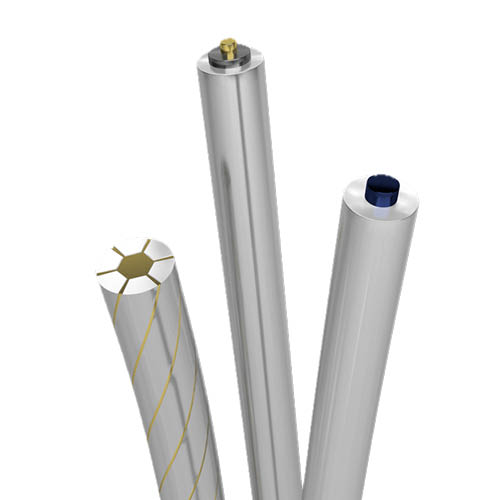CoNiCr-Nitinol composite wires for guidewire applications

Fort Wayne Metals is dedicated to pushing the boundaries of materials science, delivering precision-engineered solutions for the world’s most demanding applications. With expertise in advanced wire manufacturing, the company supports industries where performance, reliability, and innovation are paramount.
In this technical blog, David Snider, along with other Fort Wayne Metals contributors, provides insights into the materials, processes, and engineering advancements that drive better outcomes. This post serves as a high-level summary of our technical white paper, distilling key findings and practical applications.
Fort Wayne Metals developed a CoNiCr-Nitinol composite wire targeted for use in advanced guidewire applications. This novel material combines the strength and stiffness of CoNiCr alloys with the superelasticity of Nitinol, offering a seamless transition from proximal stiffness to distal flexibility. These properties may enhance physician control, improve tip performance, and facilitate the crossing of chronic total occlusions (CTOs) without requiring a jointed core wire.
Material composition and manufacturingThe composite wire consists of:
- Outer Shell: 35N LT® (CoNiCrMo alloy) for high strength and stiffness
- Core: Ni50.8Ti49.2 Nitinol for superelasticity and kink resistance
Manufactured using DFT® technology, the wire undergoes co-processing, cold reduction, and heat treatments. This process combines two dissimilar materials into a single wire system, achieving optimal strength, flexibility, and superelastic performance.
Key performance characteristics
- Mechanical strength and flexibility
- The CoNiCr shell provides an initial elastic modulus of 197 GPa and an ultimate tensile strength of 2600 MPa.
- The Nitinol core maintains an elastic modulus of 48 GPa with an ultimate tensile strength of 1170 MPa.
- The wire demonstrates a seamless transition from stiffness to flexibility, allowing for precise control.
- Torque control and one-to-one response
- Rotational testing confirmed minimal lag between proximal and distal ends, providing sufficient torque transmission.
- Optical tracking in a whip test showed that the wire exceeded ASTM F2819 standards for straightness.
- Bending and kink resistance
- The composite wire maintains higher bending stiffness in the proximal section for pushability.
- The Nitinol core offers lower bending resistance in the distal end, improving navigation and kink resistance.
- Joint-free design
- Unlike traditional guidewires that require soldering or adhesives to join different materials, this composite wire integrates high strength and superelasticity into a single, continuous structure.
- This composite wire product has the potential to reduce failure points and enhance reliability.
Fort Wayne Metals introduces a groundbreaking CoNiCr-Nitinol composite wire engineered for advanced guidewire applications. Combining the strength of CoNiCr with the superelasticity of Nitinol, this joint-free innovation offers enhanced torque control, kink resistance, and a seamless stiffness-to-flexibility transition—setting a new standard for precision and reliability in interventional procedures.
Categories: Materials Science, Wire Technology, Medical Device Innovation

